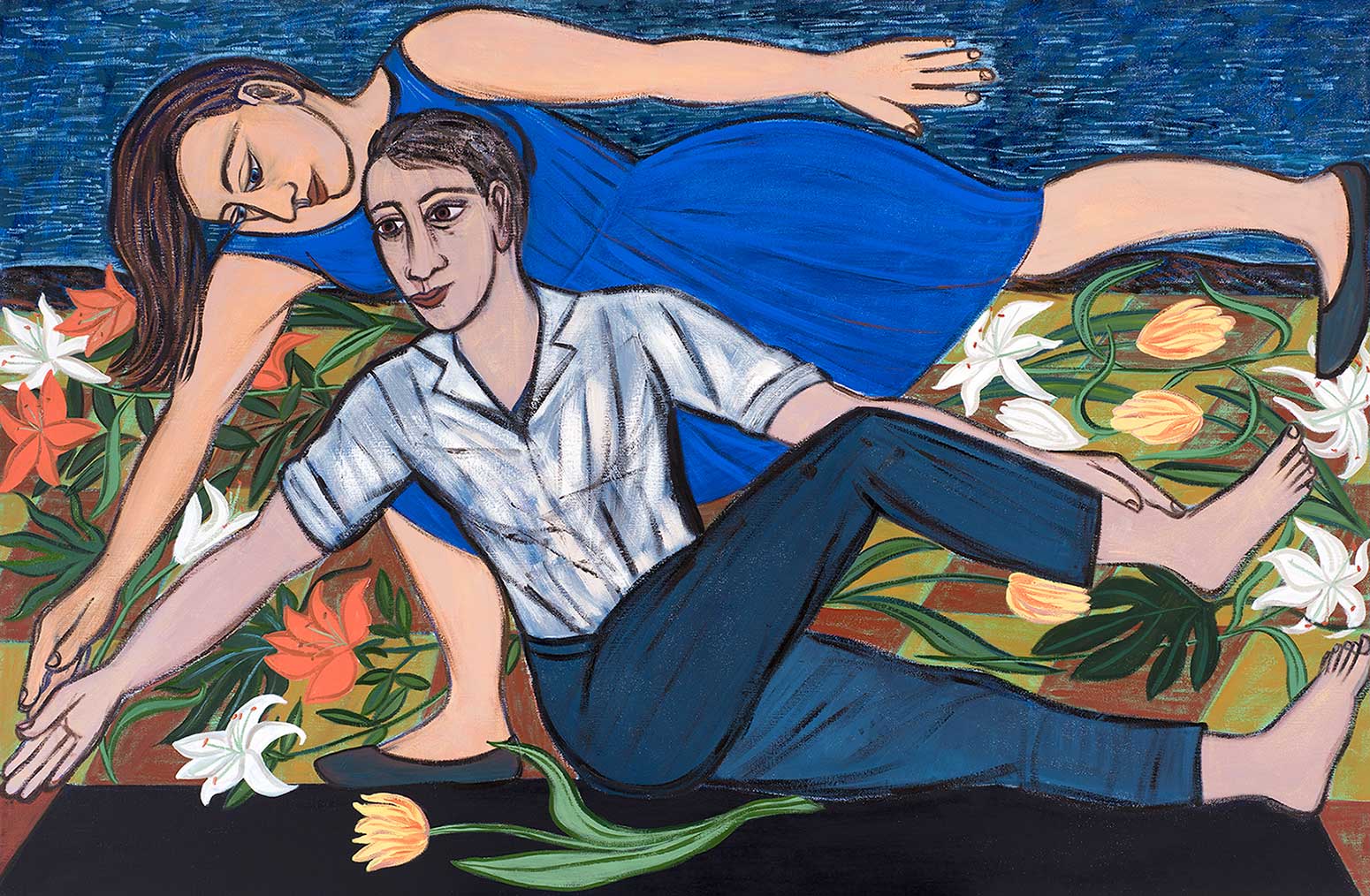Eileen Cooper’s expressive canvases often subvert our immediate understanding of the ways in which the female body is traditionally presented in Western art. Certainly, the art historical canon is no stranger to the use and objectification of its female muses, as evidenced in the notable nudes of Velázquez, Titian, and Ingres. As John Berger famously declared in Ways of Seeing, ‘Men act and women appear. Men look at women. Women watch themselves being looked at’. Here, Berger unpicks the very act of gazing upon an image of a woman unable to express her own individuality. She is at the mercy of both viewer and artist who see her as nothing more than an object to be ogled at for aesthetic pleasure. Indeed, Berger’s quote encapsulates the androcentric sphere of world-celebrated artists with a resounding honesty, questioning the very nature of the male gaze. Cooper, however, knowingly attacks this tradition, creating work from an unapologetically female stance. The artist’s drawings, prints, and paintings are consistently populated with leading women, sometimes depicted in nurturing roles as mothers, lovers, and carers, sometimes as artists, dancers or explorers. Touching upon universal themes close to many people’s hearts and experiences, Cooper explores the humanity within motherhood, life, and death. Instead of objects merely to be looked upon, Cooper’s protagonists are presented as independent, personal, and honest.
Cooper’s own artistic influences are wide-ranging and diverse. Her images of nude figures are somewhat reminiscent of the medieval stone sheela-na-gigs that populate European cathedrals, comfortably self-aware and brazen in their sexuality. Cooper’s figures are totemic, filling the boundary between goddess and human, representing allegorical beings closely allied to nature. The artist’s keen-eyed interest in bodily movement references Matisse’s paintings of graceful figures caught in the act of dancing. So too, her vivid colour palette follows the practice of Ernst Ludwig Kirchner and his fellow German Expressionists, famed for using unmixed paint straight from the tube. Cooper has been cited as a Magical Realist, following the artistic movement which blossomed during the 1920s, known for presenting a truthful, palpable reality of the current social landscape. Her influences and inspirations are both careful and considered, plucked from the expansive field of art history, although distinctively unique and clearly her own.
Blue Duet (2016) depicts a couple caught in mid-movement. The pair rest on what appears to be a linoleum floor littered with tulips and lilies, set behind a textured backdrop layered with hurried blue marks. In their movements, the man and woman are captured somewhat unclearly between dance and mundane activity. Cooper has previously favoured gardening as a subject in her work, presenting her female characters grappling with nature. Perhaps the couple are collecting flowers, freshly picked from the garden. Equally, Cooper has focussed on the visual vocabulary behind classical ballet and Indian Kathak choreography. Studying the body in motion, Cooper collaborated with the English National Ballet in 2017, creating a series of works mimicking the complex movements and contorted figures of the dancers she observed. Indeed, the couple in Blue Duet appear to glide across the picture plane, their limbs extended in a graceful conversation of sensuality. Further, the inclusion of a prominent male figure in this image is significant. As discussed, Cooper’s work often surrounds and prioritises the female experience, preferring to delegate male characters as subsidiary and supporting. Blue Duet is clearly less concerned with the portrayal of a female protagonist. Rather, it focuses on the exchange of energy and the relationship shared between the dancing partners, between a woman and an equal. As the piece’s title suggests, its content celebrates the tender narrative shared between two people
(By Eleanor Lerman)
